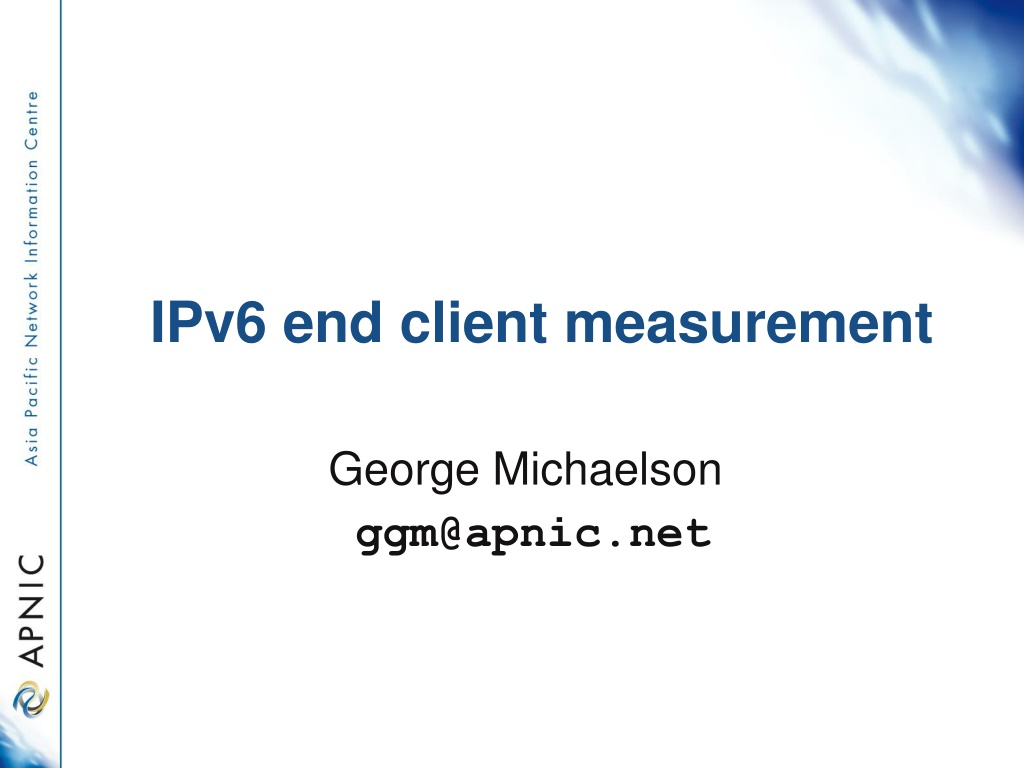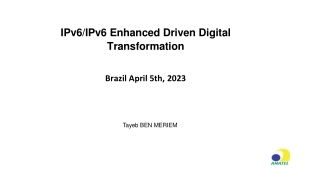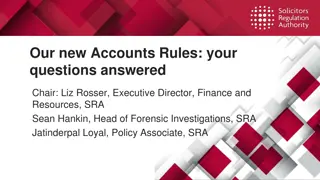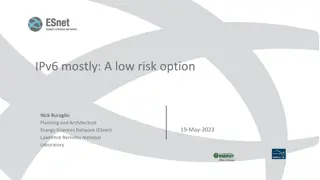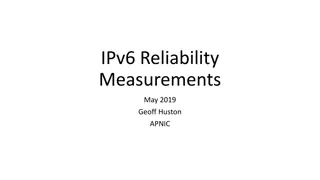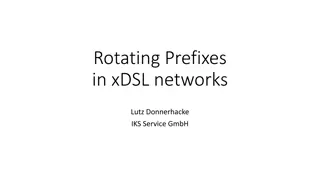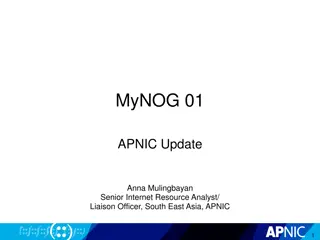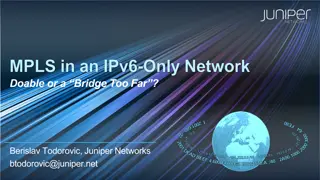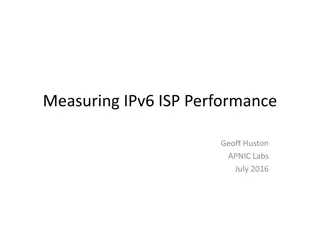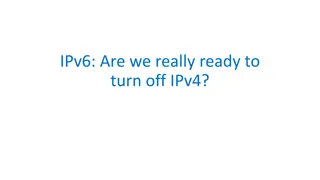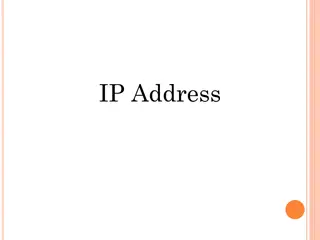Understanding IPv6 End Client Measurement Challenges
Adding IPv6 to your website can present risks, potentially impacting client accessibility. Learn about potential issues, measuring end-user behavior without website changes, and using APNIC's web measurement system for insights.
Download Presentation

Please find below an Image/Link to download the presentation.
The content on the website is provided AS IS for your information and personal use only. It may not be sold, licensed, or shared on other websites without obtaining consent from the author. Download presentation by click this link. If you encounter any issues during the download, it is possible that the publisher has removed the file from their server.
E N D
Presentation Transcript
IPv6 end client measurement George Michaelson ggm@apnic.net
Setting the scene Adding IPv6 to your website may have risks Will your clients still be able to see you? What % of clients will experience issues? Finding out in advance what to expect is useful A way to measure end-user behavior Without affecting your own website investment Measuring failure is hard! Website logs only measure successful connections
Adding IPv6 to your website may have risks Windows hosts experience problems with dual- stack (IPv4, IPv6) DNS records May refuse to connect to the IPv4 address Some hosts cannot process IPv6 DNS properly Not supported in all DHCP backed configurations Partial IPv6 problems Locally IPv6 enabled, no IPv6 route to global Internet Loss of eyeballs = Loss of revenue? When your core business presents via the web, what risks to loss of web access are you willing to take?
Finding out in advance what to expect Find a way to measure client behavior without having to add IPv6 to your website Leverage cross-site URL fetches Integrate measurements into existing tracking methods, and analytics framework Avoids key business intelligence leakage to third parties No new tools needed
Measuring failure is hard! Web logs record completed TCP/IP events Even 4xx and 5xx responses in logs are completed valid TCP/IP sessions What about the people who failed to connect? Not in access- or error- logs Only partially visible on-the-wire Characteristic missing SYN/ACK sequence in TCP signals failure to complete a 2-way handshake But (inside a time limit) client knows what worked or failed: and can report back.
APNICs web measurement system Built on google analytics method Javascript, highly portable Asynchronous, runs in the background after page render already complete Uses DNS wildcards, uncacheable Data integrated into google analytics reports Graphs of events to monitor IPv4, IPv6 and dual-stack Configurable by website manager Sample or every connection, extra tests etc
Measuring by 1x1 invisible pixels Javascript requests sequence of 1x1 pixel images Images fetched but not included in the DOM so not displayed Image fetches take place after DOM render, do not add delay to page view, invisible (may be seen in browser status bar, error report windows) Javascript callback records success/time Image fetches from unique DNS names Every client is a fresh name, no cached state Nothing in DNS name identifies your website, unique number to distinguish testcases in APNIC weblogs only Client reports timing, connect failures to your analytics report as a results/summary field Can account for unable to connect TCP/IP failure
What is tested? Basic test set is dual-stack, IPv4, IPv6 Dual stack enabled DNS behind all fetches Additional (optional) tests IPv6 literal (bypasses many IPv6 suppression settings) IPv6 DNS (can be visible to user, stress-tests DNS) Tunnel detection URLs only reachable from Teredo and 6to4 source IP addresses Results reported over IPv4 only URL to APNIC Aggregate stats reporting, trends etc. Anonymous
Adding the measurement .To your web-page Markup .
Adding the measurement .To your web-page Markup .
Adding the measurement Find your Google Analytics Block (or add one)
Adding the measurement Add the APNIC analytics block
APNIC Aggregate Results APNIC is collating measurement results online at http://www.potaroo.net/stats/1x1/ Along with some interesting specific-site sub reports
APNIC Aggregate Results Dual Stack Loss rate
Dual Stack Loss 4 in 1000 clients are unable to fetch a web URL if presented with a dual-stack DNS name Older (windows XP) hosts, browsers If you are in a mission-critical role, something to think about, but not necessarily a reason to hold off on IPv6 deployment Consider comparisons to other loss rates caused by un-related problems Noisy links, adblockers, congestion/packetloss
APNIC Aggregate Results V6 Load time differential
V6 Load time differential IPv6 is not necessarily slower than IPv4 on average Sub-1sec additional delay, sometimes faster Tunneled IPv6 can be significantly slower Tunnel establishment costs, sub-optimal routing can add multi-second delay Teredo significantly slower Another indication ad hoc tunnels are bad.
Can vs Will IPv6 de-preferenced in DNS, browser Teredo/6to4 lower preference than IPv4 But.. If you bypass DNS and give a literal IPv6 address in a URL, you can explore who actually CAN do IPv6, if they try. If you try a bit harder, who CAN use IPv6?
20% IPv6 capable! Increases Teredo/6to4 Tunnel connection rate Higher failure rate follows, so demonstrates issues in automatic tunneling Encouraging signs end-user hosts now increasingly able to use IPv6, if deployed
Interested? HTTP://labs.apnic.net/ Complete instructions on how to add markup to your website Test your own IPv6 feature displayed too! Aggregated results updated daily Other measurement methods being explored Will be updated on the labs.apnic.net site.
